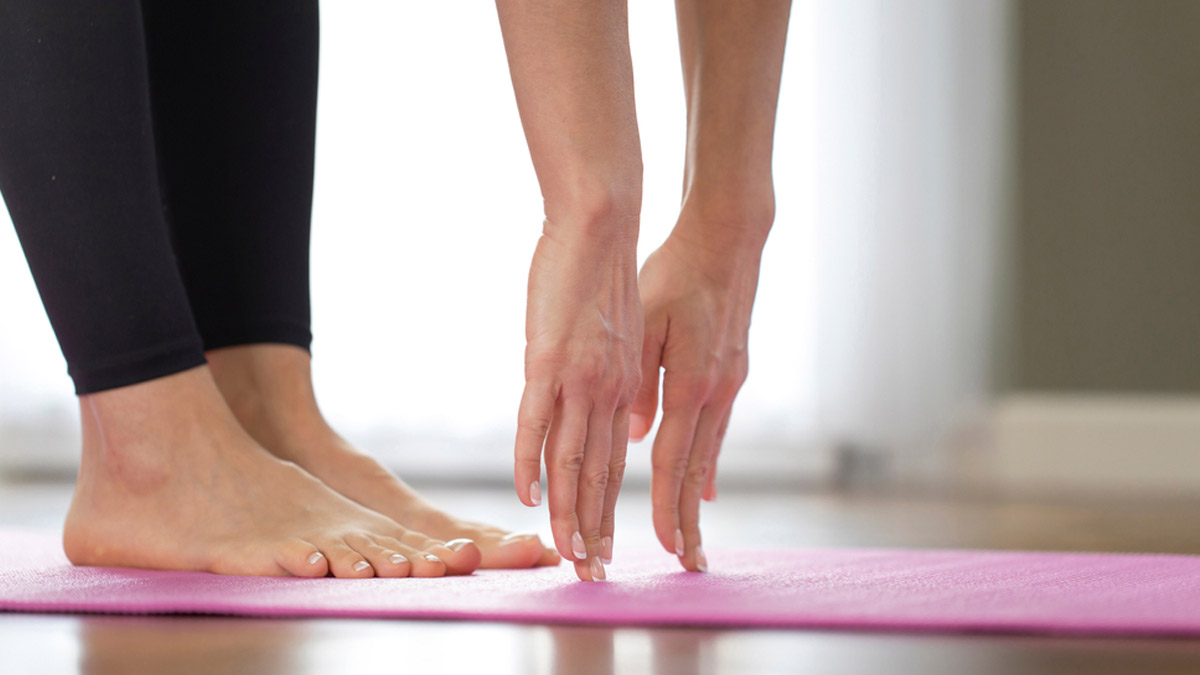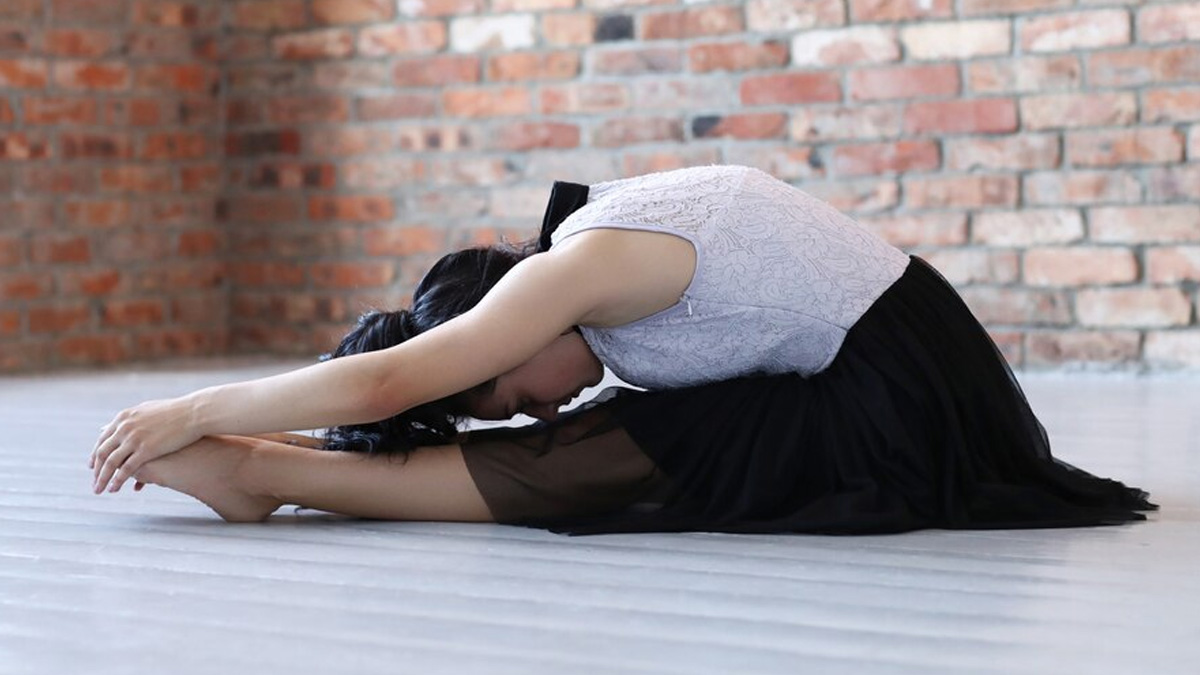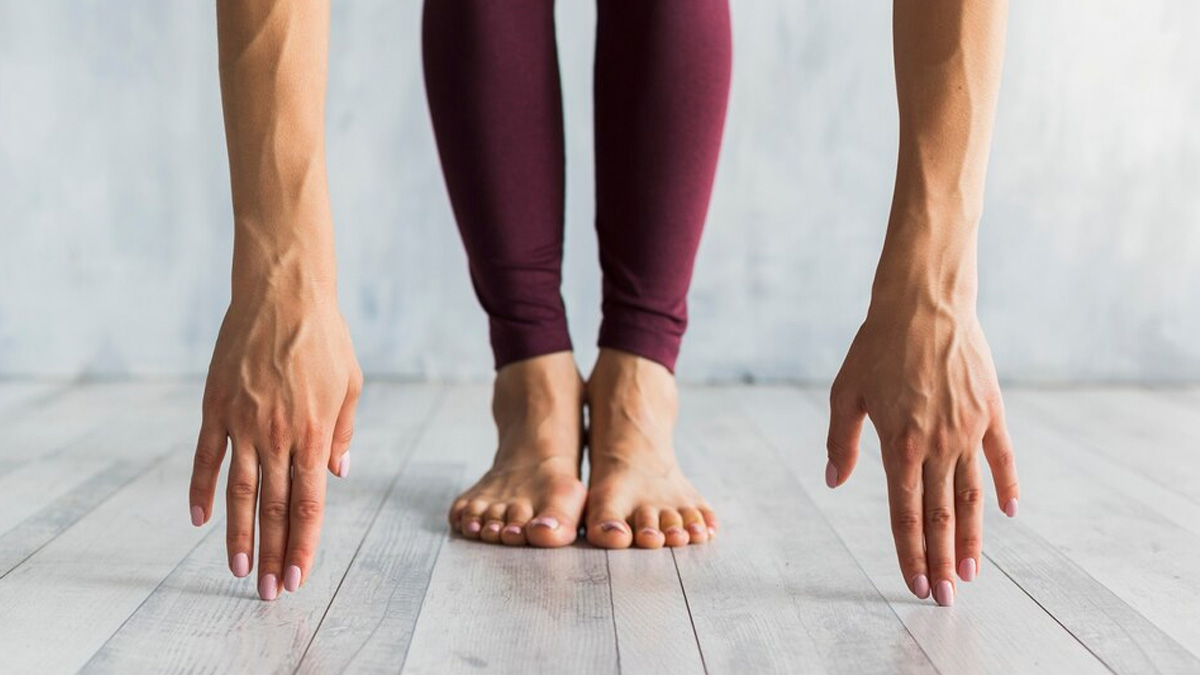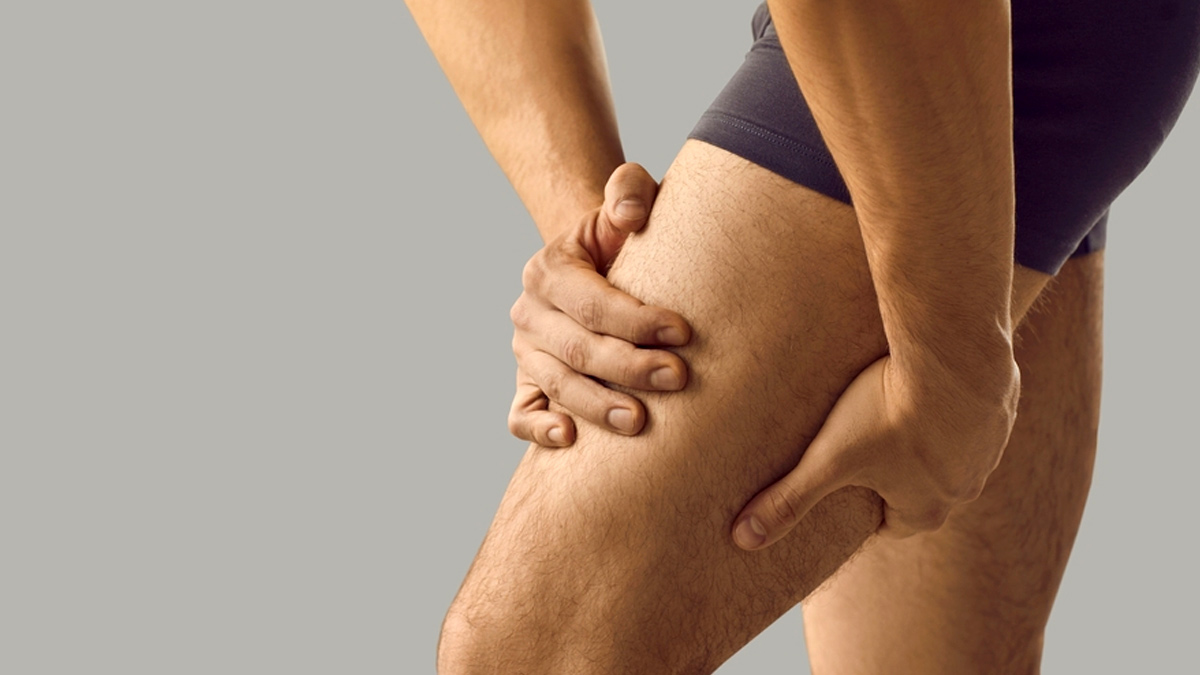
Why is it that some people effortlessly touch their toes without bending their knees, whereas others struggle to even get past their shin? The common logic behind it is regular stretching. Whether you do a sitting or a standing toe-touch, if your hamstrings are tight and tense, you’re unlikely to be as flexible as you’d want. This is because of various reasons, which we have listed below:
Table of Content:-
What Keeps You From Touching Your Toes?

In general, toe touches are a bodyweight exercise that targets your core muscles, especially your abs. There are two main variations: standing and lying down.
In the standing version, you bend forward from your hips with a straight back, reaching for your toes. In the lying-down position, you lie on your back with your legs extended and lift your upper body off the ground to reach for your toes.
Also Read: Unable To Touch Your Toes? Here Are 6 Stretching Exercises To Do
However, for those who cannot perform this exercise, Dr Sumalatha K B, Consultant - Physical Medicine and Rehabilitation, Aster CMI Hospital, Bengaluru, hints at limited hamstring and lumbar spine flexibility, which can manifest as difficulty touching the toes while bending at the knees. This could be due to several factors, including:
Prolonged static postures: Maintaining a seated or standing position for extended periods can lead to tightness in the hamstring muscles, gluteal muscles, and lumbar spine, potentially causing discomfort when attempting a forward bend.
Hip joint and pelvic stiffness: Restricted mobility in the hip joints and pelvis can limit the range of motion required for a deep forward bend.
Deconditioning: Individuals with a history of inactivity may experience a decrease in overall flexibility due to a lack of regular movement and stretching.
Underlying medical conditions: Certain medical conditions, such as spinal cord pathologies or disc herniations, can cause pain during forward-bending exercises.
Postural dysfunction: Poor posture can contribute to limitations in movement patterns throughout the body, potentially impacting forward flexibility.
Exercises To Improve Flexibility

If you're finding it challenging to touch your toes without bending your knees, eccentric hamstring exercises, like lowering yourself slowly during a squat, and static stretches, in which you stand, sit, or lie still and hold a single position for a period of time, can help improve flexibility, according to a 2004 study published in the Journal of Athletic Training.
Some helpful exercises include:
Yoga: Enrolling in a basic yoga class can be beneficial, as yoga promotes improved breathing patterns and proper body mechanics.
Strength training and cardio: Engaging in activities like weightlifting or running can also contribute to overall flexibility.
Resistance band stretching: Incorporating resistance bands into your routine can further enhance flexibility gains. For example, lying on the floor and holding a band around your foot while extending your leg towards the ground offers a targeted stretch for the hamstrings (repeat on both sides).
Also Read: Promote Overall Health: Try These Resistance Band Exercises To Stay Fit
Foam rolling: Utilising a foam roller can be an effective tool to relieve muscle tightness, soreness, and inflammation, and it also helps improve joint range of motion. It is important to learn how to use it from a physiotherapist to avoid any other damage or injury.

Dr Sumalath also recommends visiting a physiatrist or a Physical Medicine and Rehabilitation (PM&R) specialist to know the exact cause of stiffness and ache and advises following their advice.
She suggests that maintaining flexibility is crucial for overall physical well-being.
“As we age, a natural decline in muscle elasticity occurs, which can lead to decreased range of motion in the hips, shoulders, and spine,” she says, adding that regular flexibility exercises are essential to counteract these changes and promote optimal physical function.
Also watch this video
How we keep this article up to date:
We work with experts and keep a close eye on the latest in health and wellness. Whenever there is a new research or helpful information, we update our articles with accurate and useful advice.
Current Version